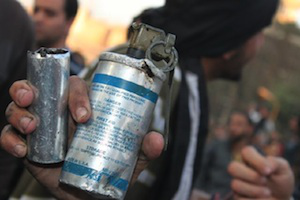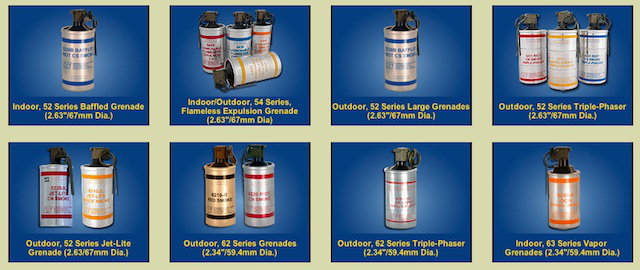
If you've been watching any coverage of the Egyptian protests, you've no doubt seen the tear gas plumes as canisters are shot at protestors—often to be picked up and hurled back moments later. Many of those tear gas containers falling on the bridges and streets of Cairo aren't local products, however; they come from Jamestown, Pennsylvania, home of Combined Tactical Systems.
Several reporters in Egypt have commented on that fact this week. ABC News ran a story on the gas today in which it quotes a protestor saying, "The way I see it, the US administration supports dictators."
It's no secret that Egypt is one of the largest recipients of US foreign military funding, much of which is designated to purchase US-made weapons; it's just that Americans don't often see Egyptians holding empty tear gas canisters stamped "Made in USA" up to a TV camera.
But what's in those canisters?

The US government requires most chemical compounds to have a Material Safety Data Sheet (MSDS) outlining the ingredients, the risks of contacting those ingredients, and cleanup procedures in case of an accident. Combined Tactical Systems helpfully makes puts these MSDS files on its website.


 Loading comments...
Loading comments...
